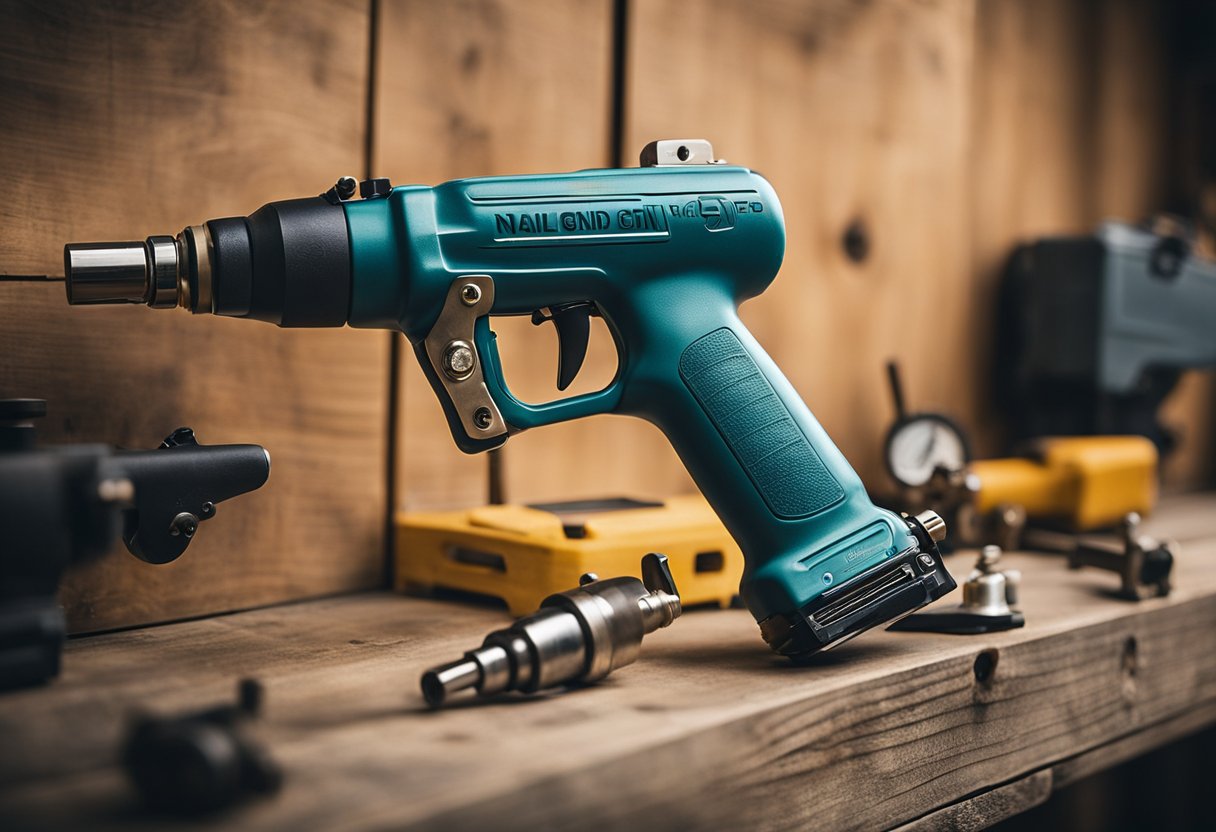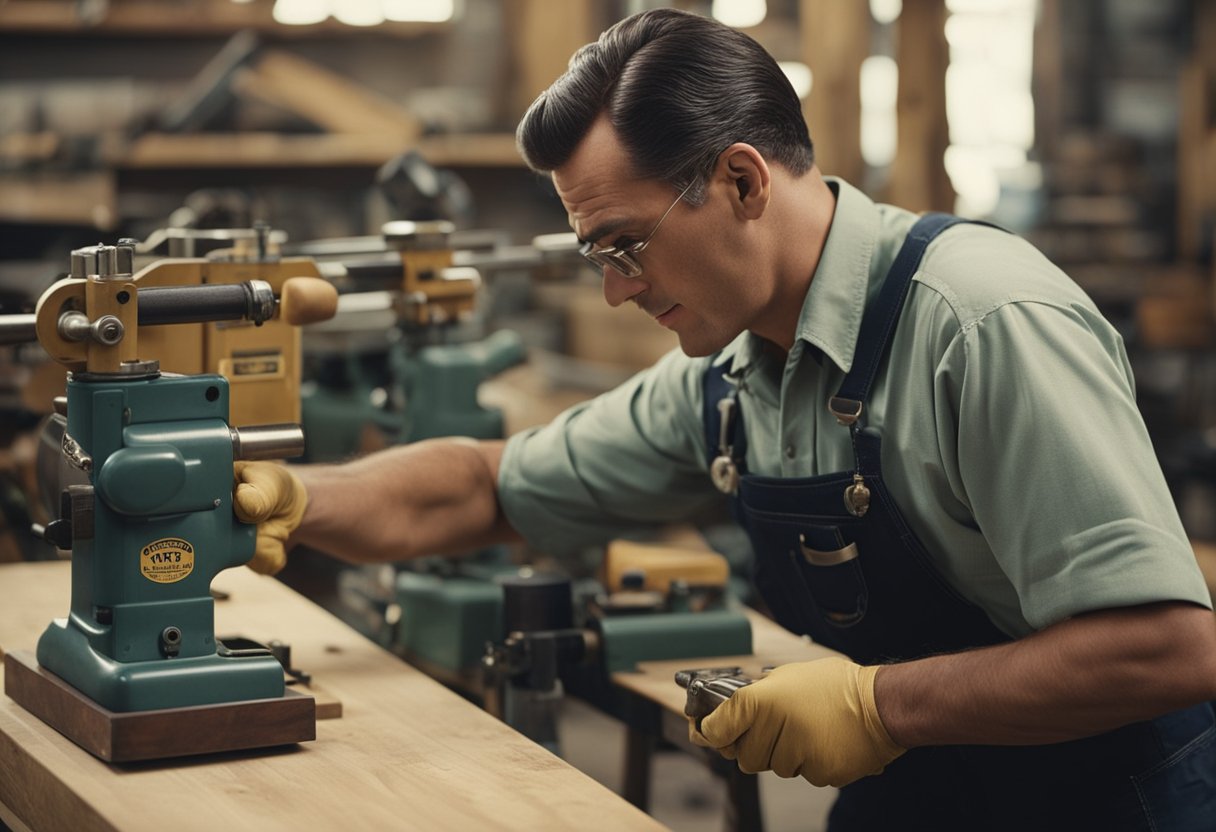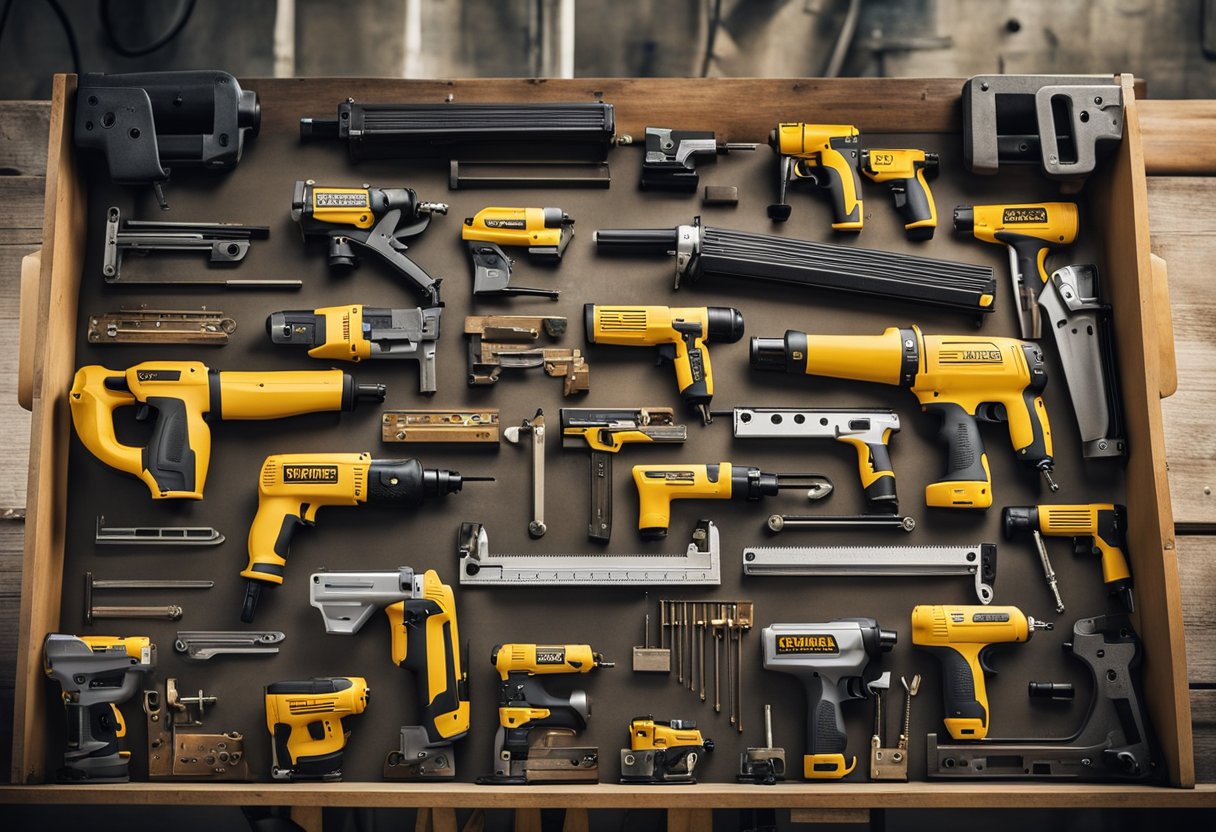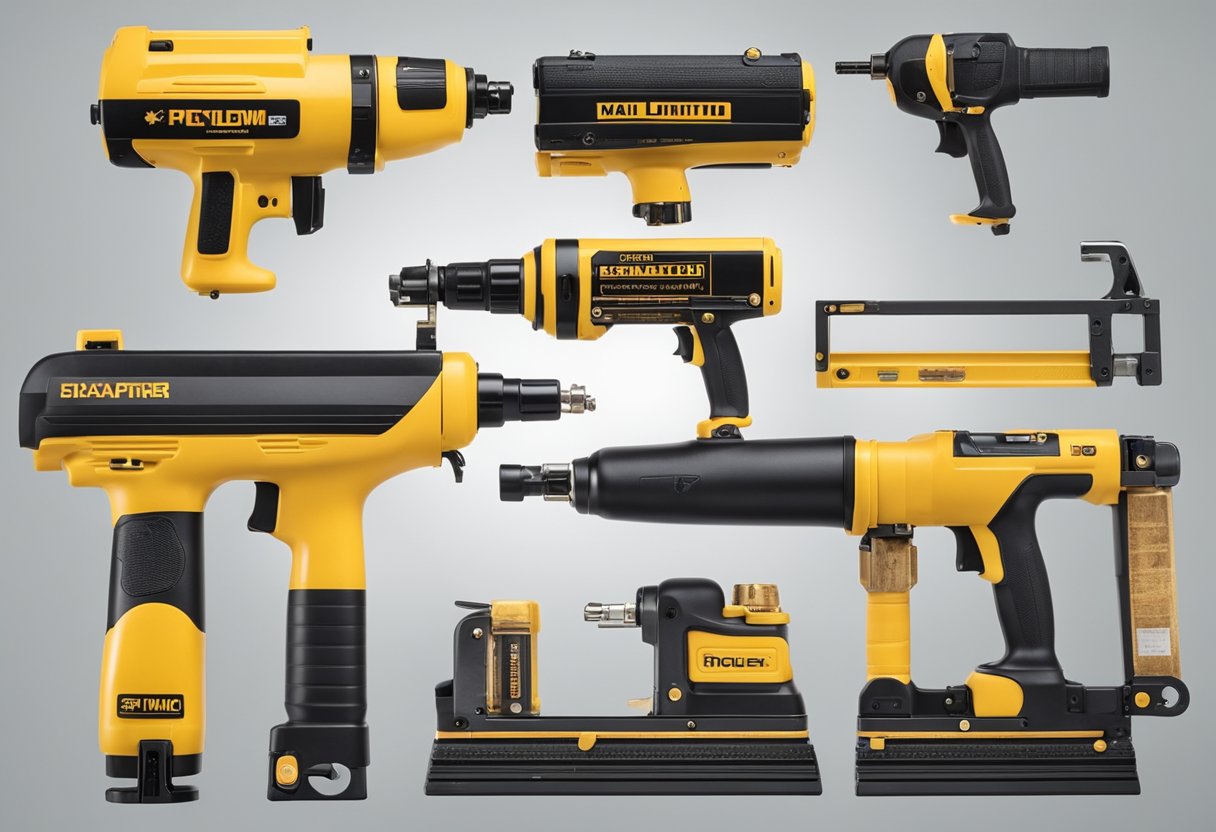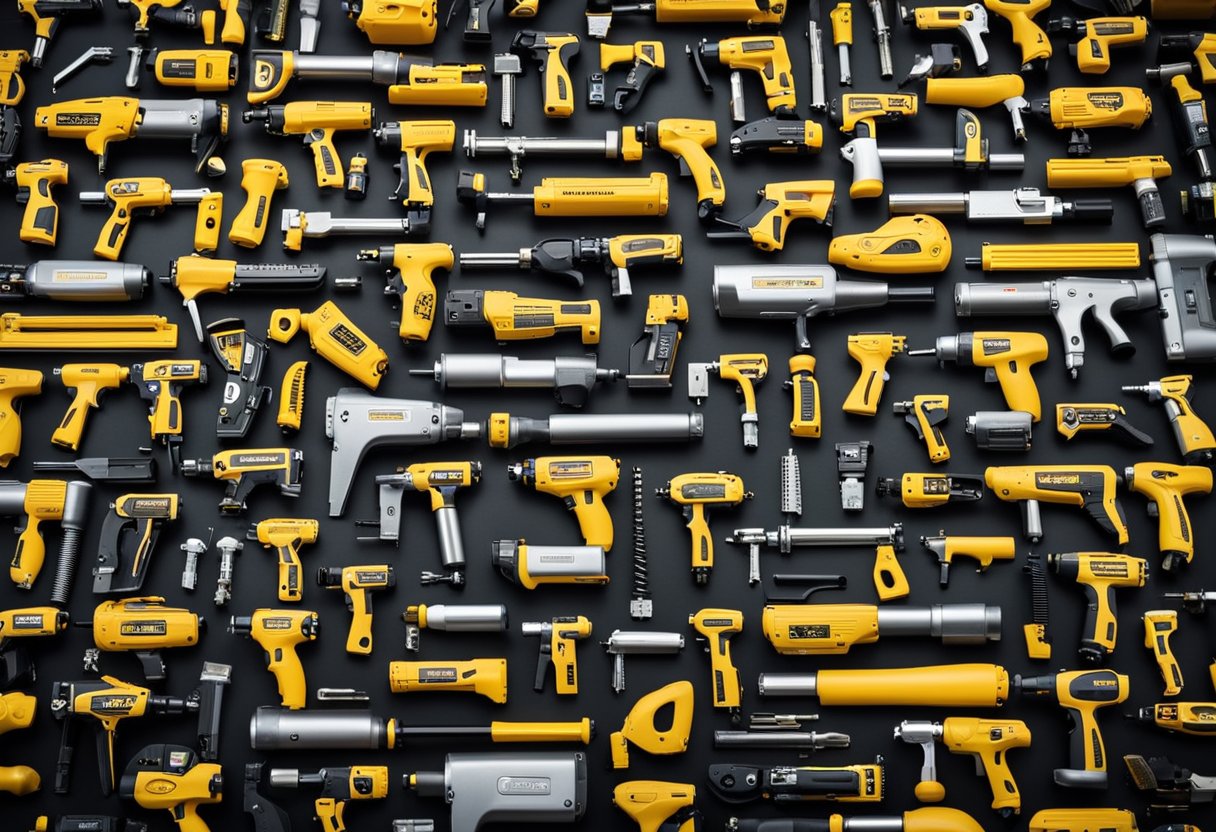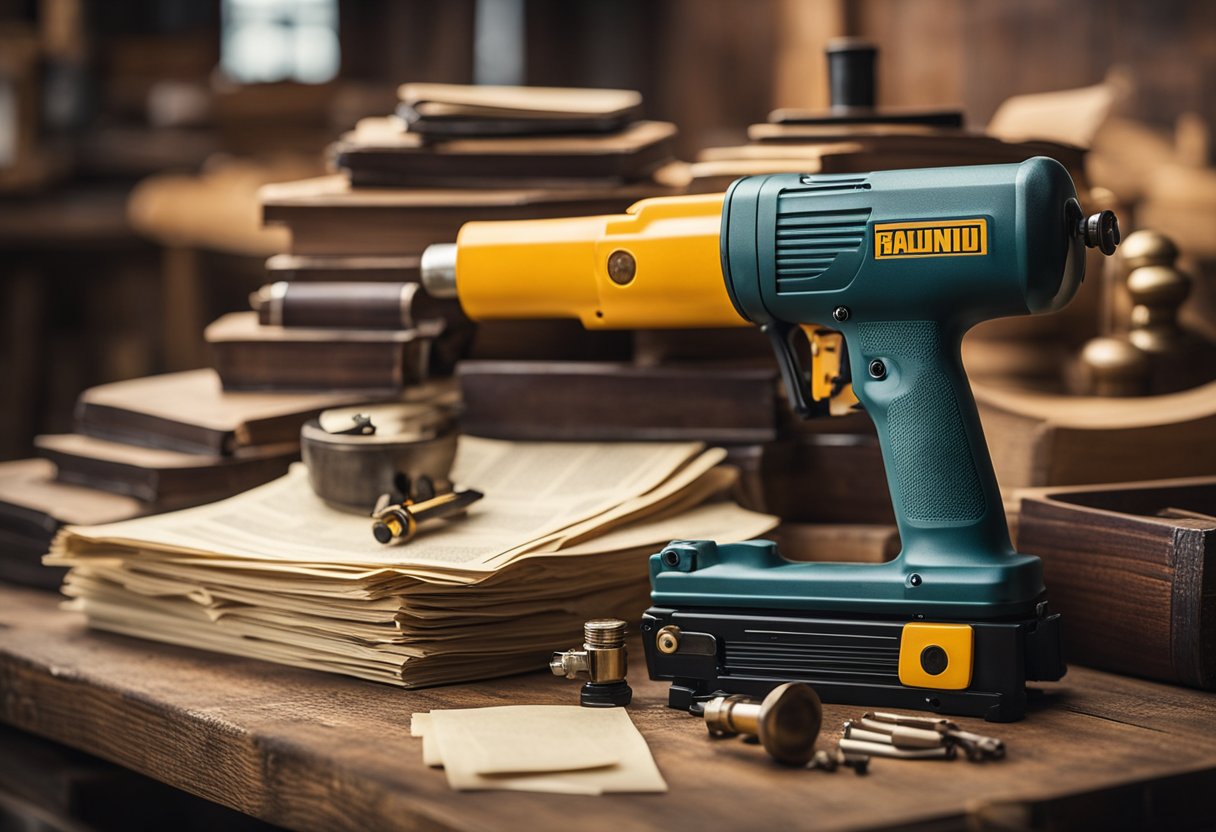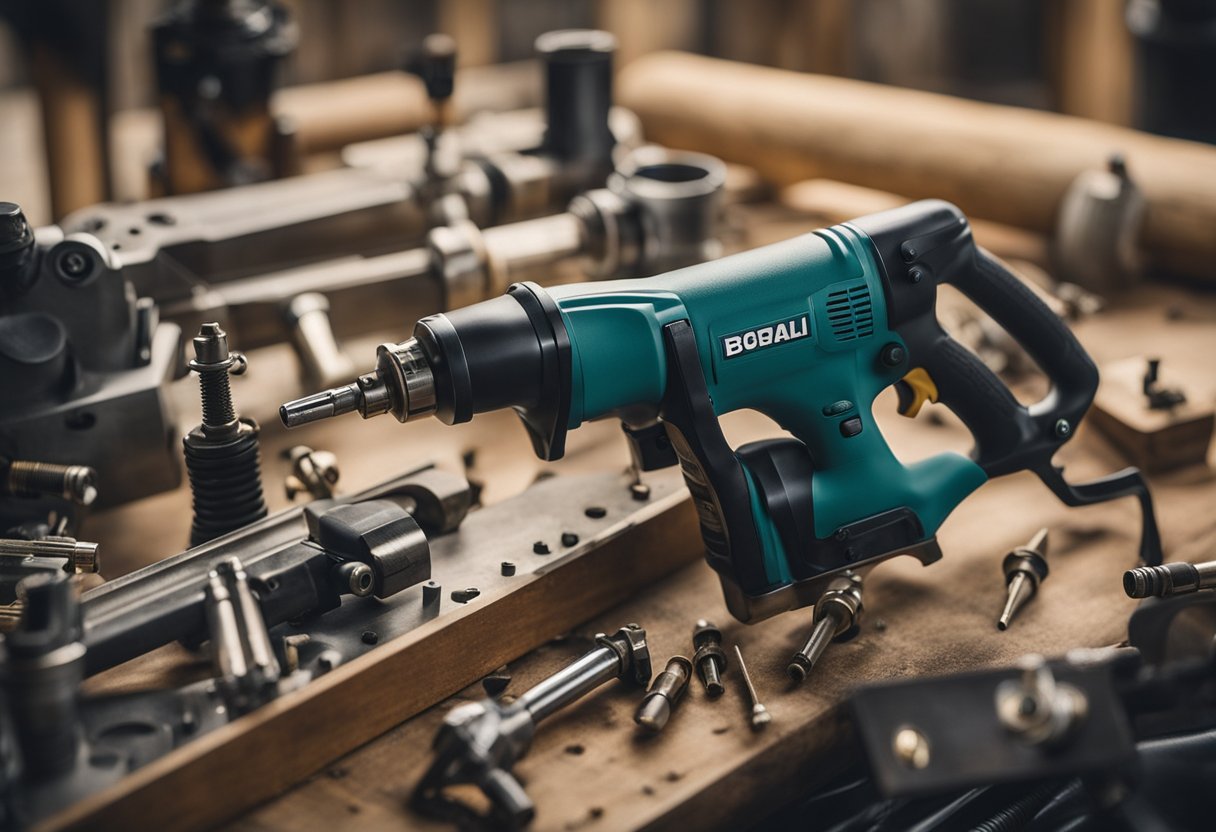I have researched and gathered information on the history of nail guns to answer the question, “When was the nail gun invented?” Nail guns are a popular tool used in construction and woodworking to drive nails into materials quickly and efficiently. They have replaced the traditional hammer and have become an essential tool in many industries. In this article, I will explore the inception of the nail gun, the evolution of nail gun technology, and the impact of nail guns on the power tools industry.
The first patent for a nail gun was filed in 1930 by Morris Pynoos, a Los Angeles-based engineer. However, it wasn’t until the 1950s that the first commercial pneumatic nail gun was introduced to the market. The earliest nail guns were stand-up versions that could fire 40-60 nails per minute into subflooring. The first handheld nail gun versions appeared in the 1960s, and designs steadily improved to fire more and different gauges of nails. Today, nail guns come in various types, including framing nailers, finish nailers, brad nailers, and roofing nailers, among others.
Key Takeaways
- The nail gun was first patented in 1930 by Morris Pynoos, but the first commercial pneumatic nail gun wasn’t introduced until the 1950s.
- Nail guns have evolved over time, and today they come in various types and designs to suit different applications.
- Nail guns have replaced the traditional hammer and have become an essential tool in many industries, including construction and woodworking.
The Inception of the Nail Gun
I have always been fascinated by the history of tools and machinery, and the nail gun is no exception. The nail gun is a tool that has revolutionized the construction industry, making the process of nailing faster, more efficient, and more accurate. In this section, I will explore the history of the nail gun, from its inception to the present day.
The concept of a tool that could drive nails into surfaces using compressed air dates back to the 17th century. However, it was not until the 1950s that the first modern nail gun was invented. According to my research, Morris Pynoos is credited with inventing the first nail gun in 1950. Pynoos was a civil engineer who was looking for a faster and more efficient way to nail plywood to concrete forms. He came up with the idea of using a gunpowder charge to drive the nail into the wood.
The first nail guns were bulky and heavy, and they required a lot of skill to operate. They were also expensive, which made them inaccessible to most people. However, as the technology improved, nail guns became lighter, more compact, and more affordable.
One of the most famous nail gun users was Howard Hughes, the American business magnate, investor, and aviator. Hughes was known for his love of aviation, and he used a nail gun to build the wooden fuselage of his famous H-4 Hercules, also known as the Spruce Goose. The H-4 Hercules was the largest aircraft ever built at the time, and it was made entirely out of wood.
In conclusion, the nail gun has come a long way since its inception. Today, nail guns are an essential tool in the construction industry, and they are used by professionals and DIY enthusiasts alike. The history of the nail gun is a fascinating one, and it is a testament to the ingenuity and creativity of human beings.
Types of Nail Guns
As a carpenter, I have used different types of nail guns for various projects. Nail guns have come a long way since their invention in the 1950s. Today, there are several types of nail guns available on the market, each designed for a specific purpose. Here are some of the most common types of nail guns:
Pneumatic Nail Guns
Pneumatic nail guns are powered by compressed air, making them ideal for heavy-duty tasks like framing, roofing, and decking. They are also relatively inexpensive compared to other types of nail guns. However, they require an air compressor to operate, which can add to the overall cost.
Electric Nail Guns
Electric nail guns are powered by electricity and are perfect for DIY projects and light-duty tasks like baseboard installation and trim work. They are easy to use and do not require an air compressor, making them more convenient than pneumatic nail guns. However, they are less powerful than pneumatic nail guns and may not be suitable for heavy-duty tasks.
Cordless Nail Guns
Cordless nail guns are powered by a rechargeable battery and are ideal for jobs where mobility is essential, such as roofing and framing. They are also relatively lightweight and easy to use. However, they may not be as powerful as pneumatic nail guns and may require frequent recharging.
Upholstery Nail Gun
Upholstery nail guns are designed for attaching fabric to furniture frames. They are small, lightweight, and easy to maneuver, making them perfect for intricate projects. They are also relatively inexpensive compared to other types of nail guns.
Brad Nailers
Brad nailers are used for smaller projects like trim work and cabinetry. They use thinner nails than other types of nail guns, which makes them less likely to split the wood. They are also relatively lightweight and easy to use.
Automatic Nailer
Automatic nailers are designed for high-volume nailing tasks. They can drive up to 60 nails per minute and are ideal for tasks like pallet construction and crate building. They are also relatively expensive compared to other types of nail guns.
Airbow
Airbow is a relatively new type of nail gun that uses compressed air to drive nails. It is designed to reduce recoil and noise, making it ideal for indoor projects. It is also lightweight and easy to use.
Overall, the type of nail gun you choose will depend on the specific task you are performing. Each type of nail gun has its own advantages and disadvantages, so it’s essential to choose the right one for the job.
The Evolution of Nail Gun Technology
As a carpenter, I have seen the evolution of nail gun technology over the years. From the first nail gun invented in the 1950s to the modern-day models, nail guns have come a long way. The early models were powered by compressed air, which was stored in a tank and delivered through a hose to the gun. These models were heavy and required a lot of maintenance.
In the 1970s, the first battery-powered nail guns were invented. These models were rechargeable and did not require a hose or a tank, making them more portable and easier to use. However, they were not as powerful as the compressed air models.
In the 1980s, engineers developed nail guns that were powered by explosive gases, such as butane or propane. These models were more powerful than the battery-powered models and were also more portable than the compressed air models.
The 1990s saw the introduction of nail guns that were powered by air pressure. These models were lighter and more portable than the compressed air models and were also more powerful than the battery-powered models.
In the 2000s, nail guns that were powered by electricity were introduced. These models were more powerful than the battery-powered models and were also more portable than the compressed air models. They were also easier to use and required less maintenance than the compressed air models.
Today, nail guns continue to evolve with the latest innovations in battery technology and engineering. Modern-day models are more powerful, lightweight, and easier to use than ever before. They come with a range of features, such as adjustable depth control, jam clearing mechanisms, and ergonomic designs, making them an essential tool for any carpenter or DIY enthusiast.
Overall, the evolution of nail gun technology has been driven by the need for more powerful, portable, and easier-to-use tools. As technology continues to advance, we can expect to see even more innovative nail gun models in the future.
Nail Gun in Construction and Woodworking
I have always been fascinated by the evolution of tools and techniques in the construction and woodworking industry. One of the most significant inventions in this field is the nail gun. It has revolutionized the way we fasten materials together, making it quicker, easier, and more efficient than ever before.
Before the invention of the nail gun, builders and carpenters used hammers to drive nails into the material. This process was time-consuming and laborious, especially when working on large construction sites. In the early days, machine guns inspired the idea of an automatic nailer that could drive nails in the same way a machine gun would shoot bullets.
The first nail gun was invented in the 1950s by three construction workers, Marvin Hirsch, Rueben Miller, and John Ollig. They developed it during their spare time, using their groundwork for inventing nail guns from machine guns. The first pneumatic nail gun was introduced to the market in 1950, which used air pressure to drive nails into the material quickly.
Today, nail guns are widely used in construction, woodworking, and furniture making. They come in various types, including handheld nail guns, roofing nail guns, trim nail guns, and framing nail guns. Builders and carpenters use them for fastening flooring, subflooring, trim, molding, and other materials.
Nail guns have made construction and woodworking more efficient and less time-consuming. They have also made it easier for construction workers to work on large construction sites, where manual hammering would be impractical. With the use of fastening tools like nail guns, log cabins, barns, and bungalows can be built quickly and efficiently.
Safety Measures and Efficiency of Nail Guns
https://www.youtube.com/watch?v=itec-zXe3sQ&embed=true
As an avid user of nail guns, I understand the importance of safety measures when using this powerful tool. Nail guns are designed to drive nails into surfaces at a high velocity, making them a highly efficient tool for construction projects. However, this efficiency comes with risks if proper safety measures are not followed.
To ensure safety, it is important to always wear protective gear such as safety glasses, ear protection, and gloves. Additionally, it is important to keep the nail gun pointed away from yourself and others, and to never touch the trigger unless the nail gun is pointed at the intended surface.
Another important safety measure is to never modify or disable the safety features on the nail gun. These features are designed to prevent accidental firing and should always be kept in good working condition. It is also important to properly maintain the nail gun and to follow the manufacturer’s instructions for use and maintenance.
In addition to safety, nail guns are highly efficient tools that can save time and increase productivity on construction projects. They are capable of driving nails into surfaces much faster than a hammer and can be used to drive nails into hard-to-reach areas.
However, it is important to choose the right nail gun for the job and to use the appropriate type and size of nails for the intended surface. Using the wrong type of nail or the wrong size can result in damage to the surface or even injury to the user.
Overall, nail guns are powerful tools that can increase efficiency on construction projects, but it is important to always prioritize safety and to use proper safety measures when using them.
Major Nail Gun Manufacturers
When it comes to nail guns, there are a few major manufacturers that dominate the market. Some of the most well-known brands include Bostitch, Paslode, and Senco.
Bostitch
Bostitch is a well-respected brand that has been around since 1896. They offer a wide range of nail guns, including framing nailers, finish nailers, and roofing nailers. One of their most popular products is the Bostitch F21PL Round Head 1-1/2-Inch to 3-1/2-Inch Framing Nailer, which is designed to handle a variety of applications.
Paslode
Paslode is another popular brand that has been around for over 80 years. They are known for their innovative products, such as the Paslode Cordless Framing Nailer, which allows users to work without the need for a compressor or hose. Paslode also offers a wide range of other nail guns, including finish nailers, brad nailers, and staplers.
Senco
Senco is a brand that has been around since 1948. They offer a variety of nail guns, including framing nailers, finish nailers, and staplers. One of their most popular products is the Senco FinishPro 18MG, which is a lightweight and compact finish nailer that is perfect for trim work.
Overall, these three brands are some of the most well-respected and popular manufacturers of nail guns in the market. However, there are other brands out there as well, so it’s important to do your research and find the one that best fits your needs.
The Role of Nail Guns in Upholstery and Furniture Making
As the stapling and nailing industry developed, nail guns started to find their way into furniture shops and upholstery businesses. Upholstery nail guns, in particular, revolutionized the furniture making industry. These nail guns replaced the traditional method of hand nailing and allowed furniture makers to produce high-quality pieces at a faster rate.
Upholstery nail guns are designed to fasten fabric and foam to furniture frames. They use special staples that are designed to hold the fabric in place without damaging it. These staples are often glued together, which provides an even stronger hold.
In addition to being faster and more efficient than traditional hand nailing, upholstery nail guns also produce a neater and more professional-looking finish. This is because the staples are driven into the wood at a consistent depth and angle, which ensures that they are flush with the surface of the wood.
Overall, nail guns have played a significant role in the development of the stapling and nailing industry, and their impact can be seen in the furniture and upholstery businesses that rely on them today.
Impact of Nail Guns on Power Tools Industry
https://www.youtube.com/watch?v=RmSEuPKt6DU&embed=true
Nail guns revolutionized the power tools industry by increasing efficiency and productivity in construction sites. Before the invention of nail guns, hammers were used to drive nails into materials. This process was time-consuming, laborious, and required significant physical effort. However, the introduction of nail guns changed the way construction work was done.
Nail guns made it possible to drive nails into materials quickly and efficiently, reducing the time and effort required to complete construction projects. The use of pneumatic tools in nail guns also made it possible to increase the power and speed of the tool, making it easier to work with harder materials. The development of cordless versions of nail guns also made it possible to work in areas without access to electricity.
The impact of nail guns on the power tools industry has been significant. They have made construction work faster, easier, and more efficient. The use of nail guns has also reduced the risk of injury to workers by eliminating the need for repetitive hammering motions. In addition, nail guns have made it possible to create more precise and consistent nail placements, resulting in higher quality construction work.
Overall, the introduction of nail guns has had a significant impact on the power tools industry. They have made construction work faster, easier, and more efficient, while also reducing the risk of injury to workers. The development of cordless versions of nail guns and the use of pneumatic tools have further increased the versatility and efficiency of these tools.
Historical and Cultural Significance of Nail Guns
As a civil engineer, I have seen firsthand the impact that nail guns have had on the construction industry. The invention of the nail gun has revolutionized the way we build structures, making the process faster, more efficient, and more precise.
The first nail gun was introduced to the market in 1950, and it quickly became a game-changer for the construction industry. Prior to the invention of the nail gun, carpenters and builders had to rely on hammers and nails to construct buildings. This was a slow and laborious process that required a great deal of skill and physical strength.
However, with the introduction of the nail gun, builders were able to drive nails into wood and other materials quickly and easily. This not only saved time but also reduced the physical strain on workers.
The cultural significance of nail guns cannot be overstated. They have played a vital role in the construction of many iconic structures, including the Spruce Goose and the Los Angeles International Airport. Additionally, nail guns have been used by American GIs to construct barracks and other structures during times of war.
It is worth noting that the inventor of the nail gun is disputed. While some sources credit John Henry, an African-American inventor, with the invention of the nail gun, others argue that it was developed by a German company in the 1940s. Regardless of who invented the nail gun, there is no denying its impact on the construction industry.
Today, nail guns come in a variety of shapes and sizes, and they are used not only in construction but also in other industries, such as paper manufacturing. They have become an essential tool for builders and craftsmen, and their importance cannot be overstated.
Frequently Asked Questions
What is the history of nail guns?
Nail guns have been around for almost 70 years. They were first introduced to the market in 1950 to speed up the construction of housing floor sheathing and sub-floors. With the original nail gun, the operator used it while standing and could nail 40 to 60 nails a minute. It had a capacity of 400 to 600 nails. Today, nail guns are a staple tool in the construction industry, and they are used for a variety of tasks.
Who invented the first nail gun?
The first nail gun was invented by Morris Pynoos in 1950. It was a pneumatic nail gun that used air pressure to drive nails into wood. Pynoos was a civil engineer who saw the need for a faster and more efficient way to drive nails into wood. He developed the nail gun as a way to speed up the construction process and make it easier for workers to complete their tasks.
What was the first nail gun like?
The first nail gun used air pressure to drive nails into wood. It was a handheld device that could hold up to 600 nails at a time. The operator used it while standing and could nail 40 to 60 nails a minute. The original nail gun was a game-changer for the construction industry, and it paved the way for the development of more advanced nail guns.
When did nail guns become popular?
Nail guns became popular in the 1960s when handheld versions were introduced. Designs steadily improved to fire more and different gauges of nails. Today, nail guns are a staple tool in the construction industry, and they are used for a variety of tasks.
What are some common uses for nail guns?
Nail guns are used for a variety of tasks, including framing, roofing, and finishing work. They are used to attach wood to wood, wood to metal, and metal to metal. They are also used to attach trim and molding to walls and ceilings.
How have nail guns evolved over time?
Nail guns have evolved significantly over the years. Today, there are many different types of nail guns, including pneumatic, electric, and battery-powered nail guns. They are available in different sizes and can be used for a variety of tasks. The development of nail guns has made the construction industry more efficient and has helped workers complete their tasks more quickly and easily.

Hi, I’m Sal Muller of Tooltrip.com. My DIY experience led me to understand essential power tools for home projects. Tooltrip.com guides enthusiasts and professionals in choosing right tools for any job. I provide concise top tool reviews for easier, efficient DIY.

